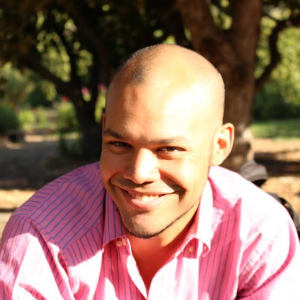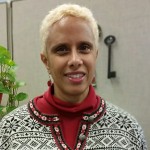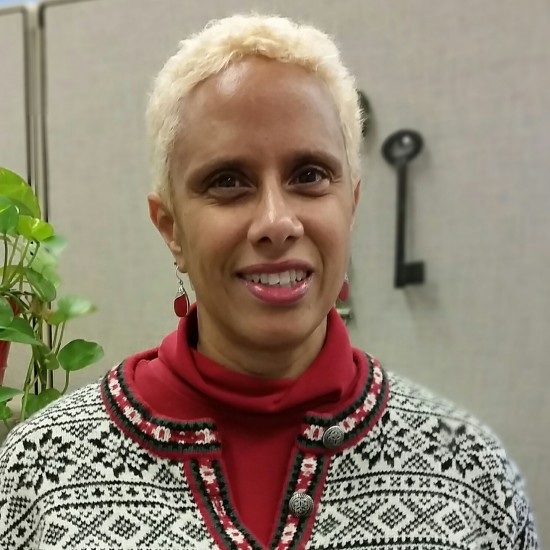 In a roundabout way, Andrew Baskin recognized food as a nexus linking complex issues regarding sustainability and immediately put this knowledge into action. Transitioning from volunteer positions with Soil Born Farms in Sacramento to guiding collaborative projects as a senior apprentice at Love Apple Farm in Santa Cruz, he subsequently traveled across Western Europe studying food systems for 2 months on a shoestring, and finally returned stateside to a vermicomposting farm in Sonoma. Now in his senior year at UC Davis studying Sustainable Agriculture & Food Systems with emphasis in Economics & Policy, he has an immense appreciation for the movement driving this educational paradigm shift. As with many families, his has survived genocide, exploitation, and war and he desires to integrate this historical narrative around social/economic/ecological exploitation into his professional career as he, both personally and collaboratively, pursues healing and justice in these dimensions.
In a roundabout way, Andrew Baskin recognized food as a nexus linking complex issues regarding sustainability and immediately put this knowledge into action. Transitioning from volunteer positions with Soil Born Farms in Sacramento to guiding collaborative projects as a senior apprentice at Love Apple Farm in Santa Cruz, he subsequently traveled across Western Europe studying food systems for 2 months on a shoestring, and finally returned stateside to a vermicomposting farm in Sonoma. Now in his senior year at UC Davis studying Sustainable Agriculture & Food Systems with emphasis in Economics & Policy, he has an immense appreciation for the movement driving this educational paradigm shift. As with many families, his has survived genocide, exploitation, and war and he desires to integrate this historical narrative around social/economic/ecological exploitation into his professional career as he, both personally and collaboratively, pursues healing and justice in these dimensions.
black identity
Switching it Up: Mixing Identities Over Time
I couldn’t understand why my mother was so outraged. I was eight, perhaps nine, and my great-aunt – my mother’s aunt – had just graced me with what she clearly thought was a compliment: “She could pass for Spanish!”
My great-aunt thought I could “pass for Spanish,” and that was enough to make my mother invite her own aunt to leave our house. I was young and probably even more naïve than some of my peers and had no idea what “pass” meant or why it would make my mother so angry. It was obviously a bad thing – I sure never wanted to pass, whatever that was! I didn’t see much of my great-aunt after that, though my mother fumed about that comment from time to time for years after.
Let me give you some background. I have two families of origin. I’ll talk about the second one first because it is the most important. I was adopted as an infant by what some would label “light-skinned” African American people and I was raised as Black. I was seven when my first adoptive mother died, my father remarried soon thereafter – again to a light-skinned, African American woman. But here’s where it started to get complicated. I learned I was adopted when my first adoptive mother died. The shock of that still echoes five decades later. I remember clearly that I desperately wanted to understand my story. My WHOLE story, not just what happened after my first few months in a Chicago orphanage. This is not a comfortable conversation for most adoptive parents, especially those who adopted in the 1950’s when birth parents were erased from birth certificates and new parents were assured that, through the miracle of careful matching, no one need ever know that their child wasn’t born to them, that their adopted child could pass as a birth child. But my place in the world had suddenly changed very painfully, my anchors ripped away, what I knew to be true turned into lies, two mothers lost before I was a decade old. And I needed to put the pieces together.
My new mom – who will just be called my mother from here – didn’t know much about my story. I heard several variations of my origins; my favorite was that my parents had met as college students; my birth mother was white and my birth father a student from Africa. He was Black, of course. Clearly that could never have worked out so I was placed for adoption. Even within the variations, the races remained the same and, suddenly, I was a mixed race person. My mom was mixed, too, with Caucasian, Creek and African American heritage, but she was raised and identified as black so, when I tried to talk about this new revelation and my identity with my equally mixed new cousins, I was informed by my mother to drop that, I was Black and that was that. My new family primarily identified as black, even though I know that they were sometimes perceived as perhaps of another background. No one thought about passing, as far as I know. We were proud of being black. So, I never brought it up again, though I frequently wondered about that missing mom, the first mom, the one who’d carried and birthed me and then gave me to another family.
I secretly tried on this mysterious identity. But I didn’t know anyone who identified as mixed; there were no popular figures, no classmates, no characters in the many books I read, who called themselves mixed. So, without some model as to what that identity meant and looked like, that youthful flirtation with a different racial identity did not have any way to take root.
Two decades or so passed. When my first child was born one of my first thoughts was that here was the first person I knew who was related to me by blood. We try to pretend that it’s not, but blood is important in American culture. Adoption is outside our norm and often not even on our social radar. People who didn’t know otherwise, always saw a resemblance between me and my adoptive family – I’d hear, “you look like your cousin,” “you’re tall like your dad,” or “you have your mom’s hair.” The miracle of careful matching. I recall once having to do a biology assignment in which we had to trace a specific inheritable physical trait through our family tree – I never knew if the teacher realized that I made all of my information up, or if she guessed that I or someone else in my family had been adopted. Even my mother would occasionally use the phrase, “Blood is thicker than water,” to stress how family should stick together. I don’t think she ever realized the irony.
After having a child, I decided to find my roots, if I could. I had been grafted onto another tree – a wonderful, welcoming, hospitable tree, but nevertheless, not the place I’d started. The saga of my search is a long story in itself so we’ll skip to the happy ending – I found my maternal side, the long-lost womb and first love. I was extremely fortunate that I was welcomed into the family with wide open arms as if I’d only been away for a while. Suddenly this only child had siblings, a host of new cousins, nieces and nephews, aunts and uncles. It was overwhelming and wonderful and mostly white. My two (older) half siblings were also mixed and there were other family members who were people of color, all welcomed in the family, but still very much a minority.
My birthmother and I were pretty taken with each other and that meant, for me, finding an identity that included her. It was easy to start calling myself mixed then. My older sister, who had grown up with our shared mother, identified as mixed – check both boxes or check other, don’t let yourself be forced to choose. We weren’t white and didn’t want to be or to try to pass as such, but we both embraced the mixed heritage that contributed to who we were. I reveled in this new identity because it gave me a connection that I had never experienced before. I gleefully checked both boxes when that pesky demographic question showed up. Not, as my mother had feared, because I wanted to be less black, but because I wanted to connect to my biological family.
Fast forward again to today. My connection to my first family of origin is solid. We see each other from time to time, talk on the phone, send cards, share via Facebook. And my identity has drifted back. I now check one box, Black/African American. It’s not because it’s what people see when they look at me, but because it’s who I feel I am. Maybe it’s because of the identity that I lived with for so long, but I feel that I can be a Black person of mixed roots, retain that solid personal connection with both my birth and adoptive families, and embrace all of the history that make me the person I am today.
Out of curiosity, I recently tried the DNA test offered by Ancestry.com. It returned my genetic background as 61% European. In the Ancestry.com world, that means Caucasian. Africa contributed 38% of my DNA with the negligible remainder, traces of West Asia. This is interesting, I suppose, and if the demographic questions that come up on studies or surveys asked for my genetic identity, I would give a different answer. But, for now, I’m African American. It’s the identity that shaped my life and experiences in America. And it’s the one I’m happy with. For now. Check back in another 20 years.
By: Darlene Nichols
[rescue_column size=”one-third” position=”first”] [/rescue_column] Darlene is a proud Midwesterner born and raised, mother of two talented musical sons, librarian extraordinaire, and advocate for diversity and inclusion. Not only does she have a mixed race heritage, she is married interracially and has biracial children so issues relate to mixed identity, acceptance, role models, etc., have been of long interest. She has been a librarian at the University of Michigan for almost thirty years and, growing out of that role, co-edited a readers’ and researchers’ guide to finding information on mixed race people entitled Multiracial America: a resource guide on the history and literature of interracial issues. She lives in Ann Arbor with her husband and Sheltie and, occasionally, sons.
[/rescue_column] Darlene is a proud Midwesterner born and raised, mother of two talented musical sons, librarian extraordinaire, and advocate for diversity and inclusion. Not only does she have a mixed race heritage, she is married interracially and has biracial children so issues relate to mixed identity, acceptance, role models, etc., have been of long interest. She has been a librarian at the University of Michigan for almost thirty years and, growing out of that role, co-edited a readers’ and researchers’ guide to finding information on mixed race people entitled Multiracial America: a resource guide on the history and literature of interracial issues. She lives in Ann Arbor with her husband and Sheltie and, occasionally, sons.


